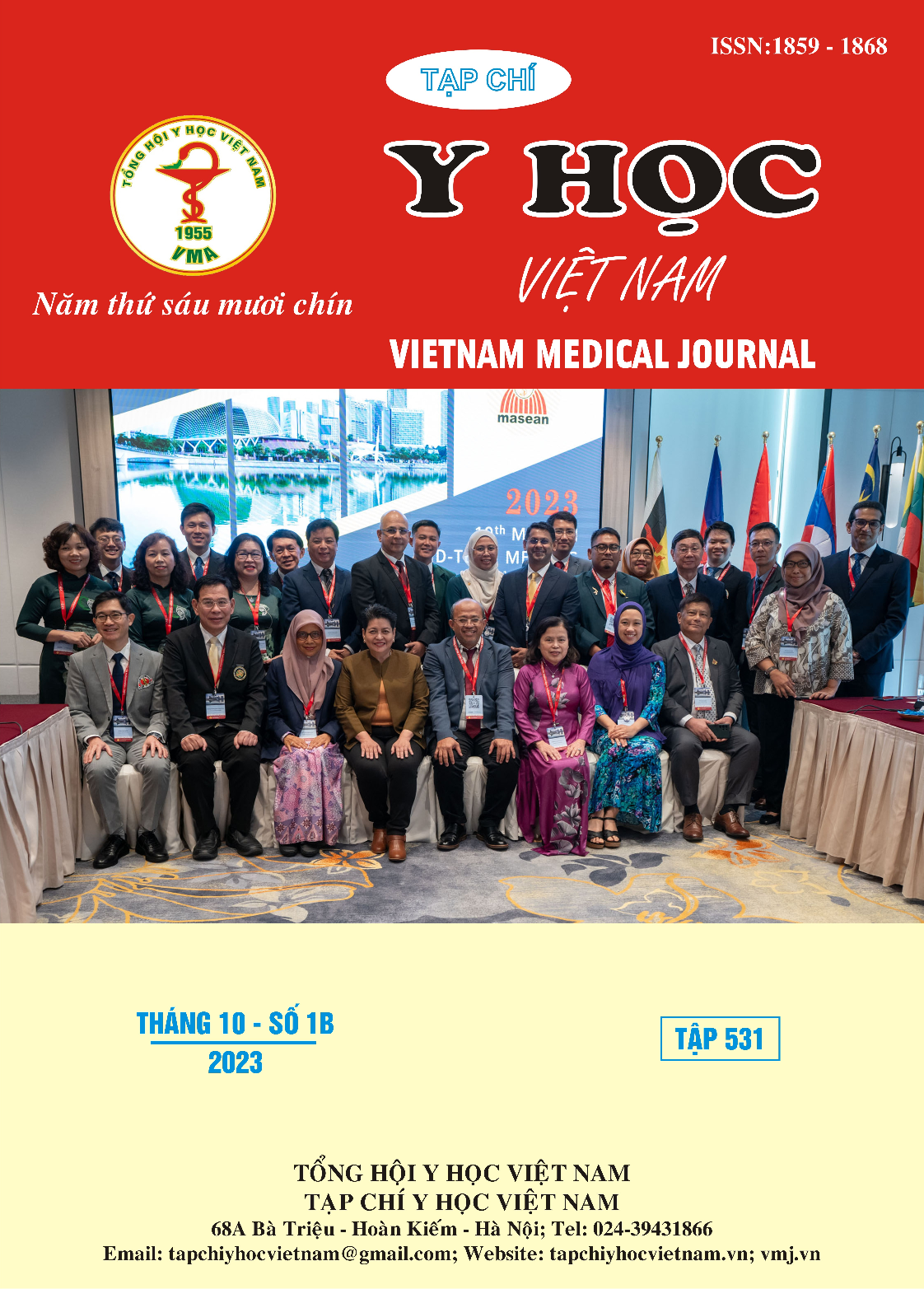EVALUATION PAIN LEVEL OF CARBON DIOXIDE VERSUS AIR INSUFFLATION DURING COLONOSCOPY
Main Article Content
Abstract
Objective: To compare the level of abdominal pain between CO2 and air insufflation during colonoscopy and evaluate related factors. Methods: This cross-sectional study included 336 patients indicated for colonoscopy with anaesthesia using Propofol from August 2022 to June 2023 at the Institute of Gastroenterology and Hepatology. The patients were divided into 2 groups: one used CO2 and the other used air for insufflation during colonoscopy. We measured procedure time, cecal intubation time, withdrawal time, and pain levels evaluated by VAS score after 15 minutes, 30 minutes and 60 minutes after the procedure. Results: There were no differences between the CO2 group and the air group in procedure time, cecal intubation time, withdrawal time. There are differences of the median VAS at 30 minutes (0 vs 3,0) and at 60 minutes (0 vs 3,0) after colonscopy between the CO2 group and the air group, p<0,001. Except for the use of CO2 during colonoscopy, there are no relationship between pain after colonoscopy with age, gender, procedure time, BMI, gastrointestinal diseases, and dose of propofol. Conclusion: Using CO2 did not prolong the procedure time, cecal intubation time, withdrawal time and decreased the pain level after colonoscopy. Patients using CO2 also had lower pain levels than using air.
Article Details
Keywords
Use CO2 during Colonoscopy
References
2. M. Fernández-Calderón et al., “Carbon dioxide vs. air insufflation in ileo-colonoscopy and in gastroscopy plus ileo-colonoscopy: a comparative study,” Rev. Esp. Enferm. Dig., vol. 104, no. 5, pp. 237–241, May 2012, doi: 10.4321/s1130-01082012000500003.
3. R. E. Forster, “Physiological basis of gas exchange in the gut,” Ann. N. Y. Acad. Sci., vol. 150, no. 1, pp. 4–12, Feb. 1968, doi: 10.1111/j.1749-6632.1968.tb19024.x.
4. K. Sumanac et al., “Minimizing postcolonoscopy abdominal pain by using CO(2) insufflation: a prospective, randomized, double blind, controlled trial evaluating a new commercially available CO(2) delivery system,” Gastrointest. Endosc., vol. 56, no. 2, pp. 190–194, Aug. 2002, doi: 10.1016/s0016-5107(02)70176-4.
5. J. Church and C. Delaney, “Randomized, controlled trial of carbon dioxide insufflation during colonoscopy,” Dis. Colon Rectum, vol. 46, no. 3, pp. 322–326, Mar. 2003, doi: 10.1007/s10350-004-6549-6.
6. H. Yamano et al., “Carbon dioxide insufflation for colonoscopy: evaluation of gas volume, abdominal pain, examination time and transcutaneous partial CO2 pressure,” J. Gastroenterol., vol. 45, no. 12, pp. 1235–1240, Dec. 2010, doi: 10.1007/s00535-010-0286-5.
7. M. Bretthauer et al., “NORCCAP (Norwegian colorectal cancer prevention): a randomised trial to assess the safety and efficacy of carbon dioxide versus air insufflation in colonoscopy,” Gut, vol. 50, no. 5, pp. 604–607, May 2002.
8. F. Gündüz et al., “Effect of carbon dioxide versus room air insufflation on post-colonoscopic pain: A prospective, randomized, controlled study,” Turk. J. Gastroenterol., vol. 31, no. 10, pp. 676–680, Oct. 2020, doi: 10.5152/ tjg.2020.20596.


